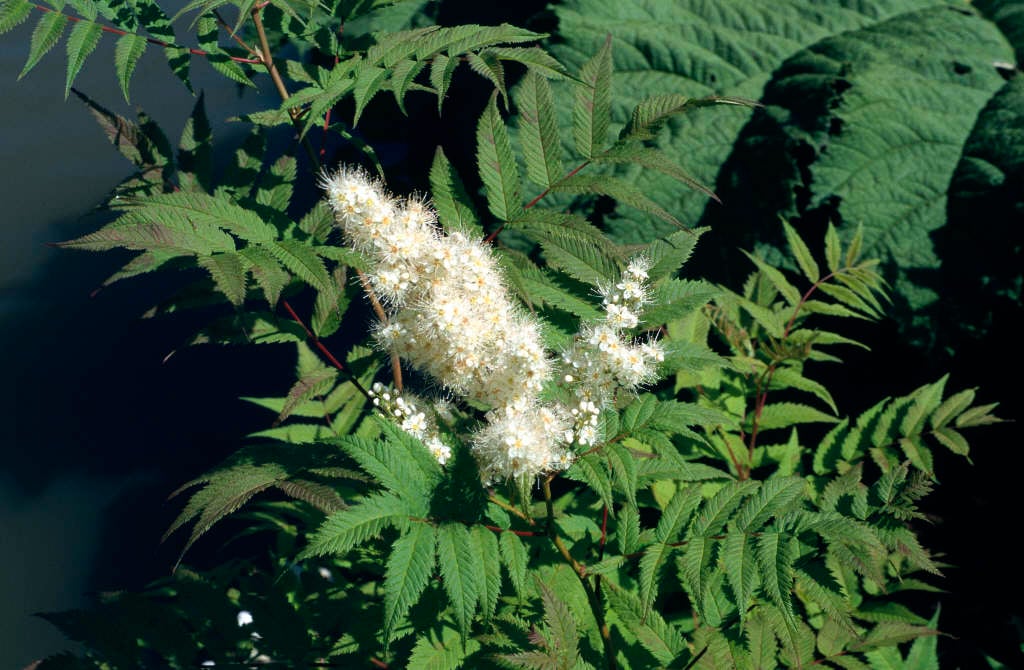Sorbaria kirilowii
Kirilow false spiraea
A vigorous, thicket-forming shrub with leaves to 30cm in length, composed of lance-shaped, toothed leaflets and, in mid and late summer, bearing terminal panicles to 40cm in length of small white flowers

Buy this plant
Size
Ultimate height
2.5–4 metresTime to ultimate height
10–20 yearsUltimate spread
2.5–4 metresGrowing conditions
Moisture
Moist but well–drained, Well–drainedpH
Alkaline, NeutralColour & scent
| Stem | Flower | Foliage | Fruit | |
| Spring | Green | |||
|---|---|---|---|---|
| Summer | White | Green | ||
| Autumn | Green | |||
| Winter |
Position
- Full sun
- Partial shade
Aspect
South–facing or North–facing or West–facing or East–facing
Exposure
Exposed or Sheltered Hardiness
H5Botanical details
- Family
- Rosaceae
- Native to GB / Ireland
- No
- Foliage
- Deciduous
- Habit
- Suckering
- Genus
Sorbaria are large, deciduous suckering shrubs with attractive pinnate leaves and small, white, spiraea-like flowers borne in large terminal panicles in summer
- Name status
Correct
- Plant range
- China, Tibet
How to grow
Cultivation
Best grown in moderately fertile, moist but well-drained soil. Useful for waterside plantings but neglected plants can rapidly form thickets when it would have the potential to become a nuisance
Propagation
Propagate by semi-hardwood cuttings in mid-summer or propagate by seed sown in containers in a coldframe in autumn. Rooted suckers can be transplanted in winter or autumn
Suggested planting locations and garden types
- Low Maintenance
Pruning
Pruning group 2 or pruning group 6; sucker removal in winter
Pests
Generally pest-free
Diseases
Generally disease-free
Get involved
The Royal Horticultural Society is the UK’s leading gardening charity. We aim to enrich everyone’s life through plants, and make the UK a greener and more beautiful place.